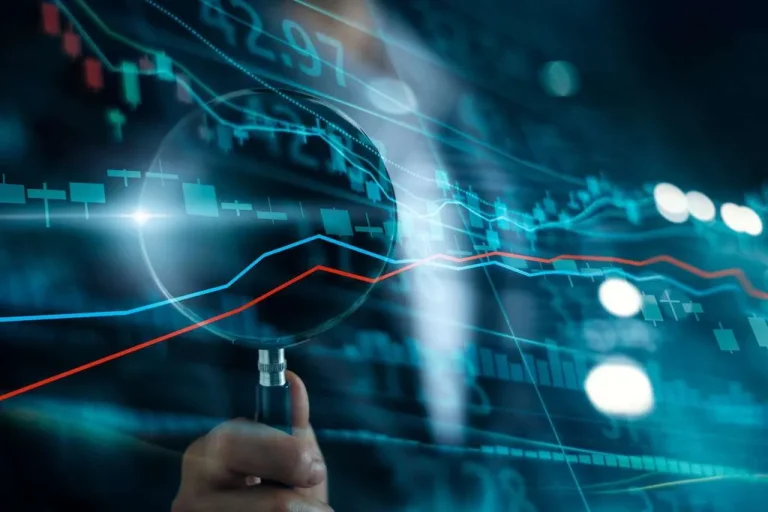Content
When using an automated trading system, traders have less control over their trades. This can be a potential downside for traders who prefer to be hands-on and make real-time decisions. Once the system is programmed and activated, it will Cryptocurrency exchange trade according to its parameters, and altering its course in the middle of trading can be challenging. In some cases, these rules can be designed with the help of a skilled programmer. Traders might tweak their strategies too much based on historical data, making them less effective in real-time markets.
What Are the Minimum Requirements for Automated Investing?
- The traders must practice due diligence while applying the algorithms to the live scenarios.
- They achieve this by breaking down large trades into smaller ones, executed periodically to reduce costs like slippage and achieve the best price possible.
- Instead, they can help you analyze the market better and automate the hard part of investing, like customizing trade parameters.
- For higher yields, high-yield savings accounts or money market accounts can offer better returns, although they may have some access limitations.
- Automated trading systems offer numerous advantages that have contributed to their popularity among investors and traders.
- It helps modify and fine-tune strategies based on past performance, making them more reliable for live trading.
- This ability allows traders to diversify their trading, spreading risk across different instruments and strategies, and can help to create a hedge against losing positions.
Forex traders can also create their trading programs by using MetaTrader 4 or MetaTrader 5 coding language called MQL4 and MQL5, for example. Thomas J Catalano is a CFP and Registered Investment Adviser with the state of South Carolina, where he launched his own financial advisory firm in 2018. Thomas’ experience gives him expertise in a variety of areas including investments, retirement, insurance, and financial planning. Begin fast trading with a small portion of your trading capital to test the effectiveness of the automated system. Gradually increase your investment as you gain confidence in the system’s performance. We are one of the top investment advisory firms, registered with SEBI, that gives investors the most recent information & news on stock markets.
How does algorithmic trading work?
Some platforms may require a minimum investment amount to open an account ranging from nothing to several thousand dollars. Generally, the investor must be at least 18 years old to open an investment account. Many platforms https://www.xcritical.com/ require that the investor be a resident or citizen of the country where the platform operates. Typically, the investor should have a bank account to fund the investment account.
Advantages of Automated Forex Trading

If you never heard of a deal, how can you care about it or express even a tiny emotion? No more monitor staring and no more deposit losses due to emotional trading. However, as pleasing as this might sound, automated trading also comes with a few drawbacks.
At a 4.55% APY, eToro’s rate is competitive, while FDIC insurance covers up to $5 million. Unfortunately, the 4.55 APY requires an account balance of $250,000 — while investors with $10,000 or less only earn 1.25% interest. Finally, most DATs would levy a certain charge for the use of their software, which tends to fall between $250 and $300 per month.
While we cover a range of products, our comparison may not include every product or provider in the market. Always confirm important product information with the relevant provider and read the relevant disclosure documents and terms and conditions before making a decision. Alternatively, you could consider short-term investment options like Treasury bills or money market funds outside your brokerage, depending on your financial goals. The best action as a trader is to maintain a backup plan in case your current way of doing business suddenly changes because of, say, system failure or the bankruptcy of your system provider.
So keep your options open when choosing your systems and never become married to a particular company or software program. Commissions for direct access trades, by contrast, are based on a scale that depends on the number of trades a trader executes over a given period of time. Commissions typically range from $15 to $25 per trade, plus an additional fee levied by the ECN. Algo trading is an innovative method of trading that uses algorithms as a pre-defined set of instructions. These algorithms or instructions are run by the system to obtain a particular output. Buy and sell signals are received by the program and, based on the signals, the orders are placed and executed.
Generally, both offer lower fees compared with traditional human financial advisors. If you’re trying to trade from your home computer, then an exchange’s server-based automated trading system can help you to avoid catastrophe from a failed personal internet connection. If you’re a professional trader, then algo trading is worth a try to see if it’s a good match for your trading style and temperament. Automated trading involves leveraging algorithmic trading to create, buy and sell orders on the stock markets or on exchanges.

Automated investing is a broader term that encompasses any form of investment management that uses technology to automate processes. This can include robo-advisors, algorithmic trading, and artificial intelligence (AI)-driven portfolio management. The range of services from automated investing platforms allows investors to choose an approach in line with their investment style, goals, risk tolerance, and values. As of now, in 2023, this information provides a comprehensive look at automated trading systems. Still, always be sure to stay updated with the latest advancements and trends in the industry to ensure informed decision-making. This sometimes turns out to be incorrect as you can’t always expect a simulated strategy to perform in an exact way on live trading.
We may also receive compensation if you click on certain links posted on our site. While compensation arrangements may affect the order, position or placement of product information, it doesn’t influence our assessment of those products. Please don’t interpret the order in which products appear on our Site as any endorsement or recommendation from us.
While there are certainly advantages to automated trading, there are also drawbacks that need to be taken into consideration. Autotrading utilizes computer algorithms to execute trades in financial markets. However, there are risks such as technical failures, over-optimization, limited flexibility, and dependencies on market conditions. Ongoing monitoring and oversight are necessary to ensure effective performance while adhering to regulatory requirements. It allows traders to apply their trading rules to historical market data to determine the feasibility of their strategy. This process helps traders evaluate and refine a trading idea before putting money at risk.
Several trading platforms feature strategy-building “wizards” that enable users to select from a list of commonly used technical indicators to develop a set of rules for automated trading. Traders can define rules like entering a long position trade when the 50-day moving average crosses over the 200-day moving average on a specific trading instrument’s five-minute chart. Users can further define the kind of order (like market or limit) and the trigger for the trade. In the fast-paced world of stock trading, automated trading systems have carved a niche for themselves.
Pick from a variety of pre-built algorithmic trading bots that you can tailor to your strategy, or develop your own using the MQL4 programming language. Disadvantages – algorithms are created by people, meaning the risk of human error remains. A small mistake in coding or strategy could lead to substantial losses, even when properly tested, because past performance does not guarantee future results. Today, however, platforms like MetaTrader 4 (MT4) make algo trading more accessible with advanced strategy building, automation and backtesting tools that don’t require advanced coding skills. A highly optimized strategy may give you a false sense of security, as backtesting can make the strategy appear foolproof. However, good results in historical data don’t guarantee success in live markets.